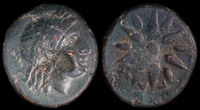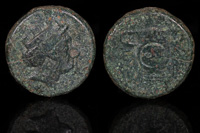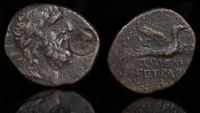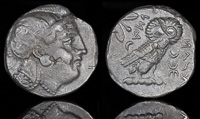Countermark
View All Tags
One of the most common uses of countermarks was for authenticating or validating coins. In some cases, coins could be countermarked by authorities to confirm that they were still in circulation, especially when coins were struck over a long period and their designs became worn or altered. This was particularly important in times of economic instability or when a new ruler took power and needed to reassert control over the currency. Countermarks might be applied to demonstrate that a coin remained in circulation under new political leadership, ensuring that it still had value despite changes in government or rulers. For example, after a new emperor ascended to the throne in Rome, coins from the previous regime could be countermarked to indicate their continued legitimacy.
Countermarks were also used for adjusting the value of a coin. When coinage experienced debasement (a reduction in the precious metal content of coins), authorities sometimes countermarked older coins to officially recognize their new, lower value in the marketplace. This practice helped to maintain some degree of stability in currency circulation despite the erosion of the coin’s intrinsic value. In cases where coins were accepted across vast distances, countermarks could also serve as regional distinctions, indicating the coin’s acceptance in particular areas or territories.
In addition to their administrative functions, countermarks were sometimes used to alter the image or send a political message. This could include a ruler’s symbol or inscription being applied to the coin of a previous ruler, symbolizing conquest, control, or an alignment with the new authority. These countermarks were a form of political propaganda, as they allowed rulers to assert their dominance and ensure their image appeared in circulation across the empire, even on coins from prior administrations.

Gambrion, Mysia 4th-3rd century BCE

Hebryzelmis 389-383 BCE

Pharnabazos 379-374 BCE

Ptolemaios 85-40 BCE

Sabakes 340-333 BCE
